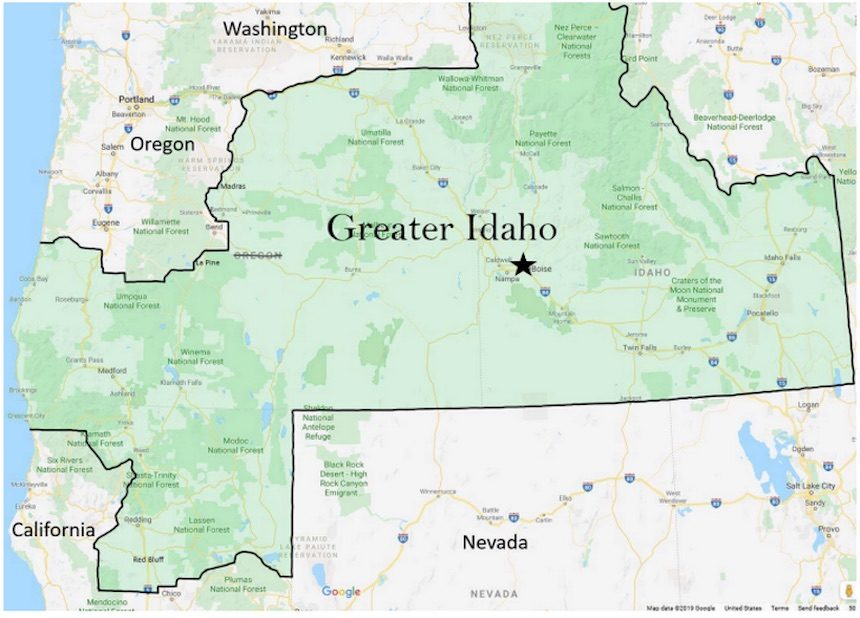Two Americas

I’ve long rolled my eyes at the idea of “two Americas,” which is that we are so divided by politics and culture that we are really two countries. But I’ve changed my mind, more or less, in no small part because people are doing the one thing that really will make us two countries–move places based on their politics. Young liberal people especially flee their conservative towns and states very fast if they have options. Meanwhile, we have seen story after story in recent months about conservatives leaving Oregon, Washington, and California for states such as Idaho and Texas or even shift borders so that right-wing counties can create a “Greater Idaho” as if there would be anything great about more Idaho.
In any case, I can’t really argue that conservative and liberal states have such starkly different values that I don’t really know how this gets solved going forward. It’s true that a lot of the people moving to Austin or Charlotte are young people of color. On the other hand, you have this total misunderstanding about what is happening in places such as Texas. For example, you had this tweet from Paul Waldman the other day calling for the DNC to go all-in on turning Texas blue. That’s fine….but the assumption behind this is that the growth of Texas has led it to be more liberal. That is not the case. In 2018, Beto O’Rourke defeated Ted Cruz in his Senate race among native-born Texans. It was the transplants to Texas who went overwhelmingly for Cruz. They move there because they want to vote for people like Ted Cruz and Ken Paxton. So sure, I guess put all the money into Texas, but you’d better be realistic about the future of Texas, which is likely more right-wingers moving there so they can have open carry and no legal abortions and giant megachurches and whatever else.
Anyway, Jamelle Bouie has a good essay on this. Here’s the last few paragraphs:
And Michigan Democrats aren’t alone in their pursuit of policies to benefit the broad swath of residents under their charge. Upon winning their trifecta in 2022, Minnesota Democrats — led by Gov. Tim Walz — embarked on a similar effort to make life better for most people in the state. In the face of largely united Republican opposition, Minnesota Democrats mandated paid family and medical leave, barred employers from holding anti-union captive audience meetings, strengthened workplace protections in warehouses and meatpacking plants, curtailed wage theft and gave free breakfast and lunch to all children in Minnesota public schools.
Maryland Democrats, for their part, have used their new trifecta to speed up the state’s transition to a $15-per-hour minimum wage, expand tax credits for low-income residents, limit where people can carry firearms in public places and protect abortion rights.
One final observation: Over the long term, state policies have a measurable impact on life expectancy. Writing for The American Prospect, Paul Starr summarizes the results of a 2020 paper looking at the disparity in life expectancy between the most liberal states and the most conservative states, singling out Connecticut and Oklahoma as two states where policies shifted the most, either to the left or to the right. “Their model,” Starr writes, “indicated that if all states’ policies were the same as Connecticut’s in 2014, U.S. life expectancy would have been two years longer for women and 1.3 years longer for men — and if all states’ policies were like Oklahoma’s, Americans’ lives would have been shorter.”
Americans are often taught to think of the differences between Republicans and Democrats as a set of reasonable disagreements over how to tackle agreed-upon problems. But what we can see, in the divergent agendas of Republican-led states and Democrat-led states, is how the differences have far more to do with the actual purpose of government. For Democrats, that purpose is usually the public good. For Republicans, that purpose is harsh social regulation, with little apparent regard for the lives of those who have to endure these policies.


